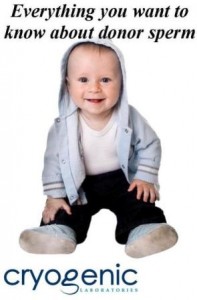Blog written by CLI Director of Operations, Michelle Ottey, PhD.
Not all sperm donors are alike. When screening for sperm donors, sperm banks are looking for a good, diverse, representative group of men who will appeal to our patients.
The staff meets the prospective sperm donors and works with them through the screening process. At our labs we do in person medical and program interviews with the prospective donors. It is during these interviews that we really start to get to know the men and they open up to us.
Most of the interview consists of reviewing the program requirements, reviewing their medical histories, clarifying health history and the overview of the process. We always allow time for the prospective sperm donors to ask us questions, which range from, “What do you mean when you say I have a great specimen?” to “Who gets the sperm?”
The processing questions are easy and straightforward. The more thoughtful questions often lead to interesting conversation with the men. I was once asked about who the recipients were, and what followed was a long and sympathetic conversation about medical and social infertility. I spoke to the prospective sperm donor — we’ll call him B — about our patients. I told him that we serve a very diverse group of men and women, including heterosexual couples who are facing medical infertility, single women who are ready to become mothers, and same-sex couples who want to build families through donor insemination.
B looked very invested in the information and considered it carefully before responding to me. He told me that he started the process thinking it would be an easy way to earn some extra money, but as he screened and learned more he became more invested in the process. He shared that doing this sperm donor program was more than he expected, in a very good way. He was so happy to know that all different kinds of families could result from his donating.
We have had sperm donors ask about the recipients many times, and each time we have had a positive experience after telling them about all of our diverse patients.



